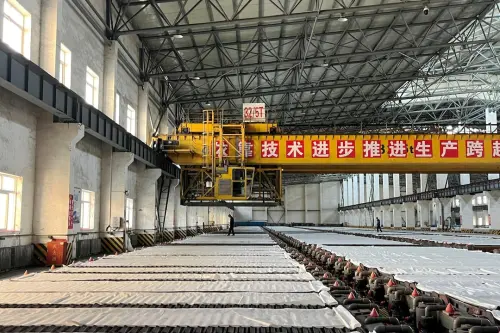Major copper smelters across China have initiated equipment maintenance in March, a period typically marked by peak demand, in an effort to mitigate losses stemming from a worsening feedstock shortage that is adversely affecting margins. This decision to shut down plants during one of the busiest times of the year underscores the significant challenges refiners are facing, exacerbated by smelting overcapacity that has fueled intense competition for raw materials and driven treatment fees below zero.
Approximately 980,000 metric tons of smelting capacity, representing 8% of China's total from last year, is slated for maintenance this month, according to Hongyuan Futures. Analysts and a smelter manager indicated that this figure is unusually high compared to previous years.
Staff at three major smelters confirmed the commencement of equipment maintenance in March. Tongling Nonferrous Metals Group, which accounted for 13.5% of China's refined copper output in 2023, began a month-long maintenance shutdown of some smelting equipment in early March.
Production cuts in China can be sensitive, as many smelters play a crucial role in regional economies; however, similar to other sectors like steel and oil refining, the copper smelting industry is also grappling with overcapacity as operators seek to gain market share.
This overcapacity in China, the largest global supplier of refined copper used in wiring, machinery, and new energy technologies, is contributing to a global imbalance in the copper smelting industry. By undertaking maintenance, smelters aim to reduce consumption of copper concentrate, alleviate the concentrate shortfall, and prevent processing fees from declining further.
The industry's challenges will be a focal point at the March 31 quarterly meeting of the China Smelters Purchase Team (CSPT), where production cuts are among the measures anticipated for discussion.
"There is a significant risk of large-scale output cuts among Chinese smelters this year," noted Patricia Barreto, senior analyst at S&P Global Commodity Insights. If Chinese smelters reach a consensus on production cuts, refined copper output may decrease, potentially leading to increased imports.
Widespread maintenance during March is atypical; smelters usually capitalize on a surge in demand following the Lunar New Year holiday before conducting maintenance in April or May. The supply of copper concentrate has been tight since late 2023 due to disruptions at major mines, including First Quantum's Cobre mine in Panama, alongside expanded smelter capacity. This growing overcapacity is heightening the demand for globally scarce concentrate.
Analysts from Antaike and Shanghai Metals Market have revised down their forecasts for copper concentrate output growth this year, reflecting downward adjustments from producers. Some smelters are operating at a loss, not just in China. For instance, Glencore's Pasar smelter in the Philippines was placed on care and maintenance in February. In contrast, Japan's smelters may weather these tough times better due to their diversification and long-term supply contracts.
Treatment and refining charges (TC/RCs), a crucial revenue source, have been negative since December 20, obliging smelters to pay miners or traders to process concentrate into refined metal. The Fastmarkets copper concentrates TC/RC index fell to a record low of -$26.5 per ton and -2.65 cents per pound on March 7.
"The situation is much tougher this year; last year, smelters could still earn some profit due to better long-term contract prices, but now they are facing losses regardless," explained a manager at a Chinese smelter. "The only difference is whether you are losing more money or less," the manager added, highlighting potential losses of up to 3,000 yuan ($414.47) per ton of refined copper for spot cargoes, while four analysts estimated losses between 1,000 yuan and 2,000 yuan per ton.
